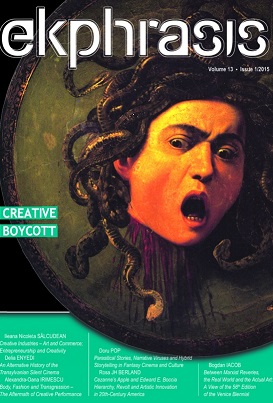Transaesthetic Paradigms of Creativity: Artistic Capitalism as an Ideology of Consumption
Transaesthetic Paradigms of Creativity: Artistic Capitalism as an Ideology of Consumption
Author(s): Oana ŞerbanPublished by: Universitatea Babeş-Bolyai, Facultatea de Teatru si Televiziune
Keywords: artistic capitalism; consumption; society of the spectacle; de-aestheticization; transaesthetic individualism
Summary/Abstract: The aim of this paper is to examine and define artistic capitalism as the expression of the postmodern culture of authenticity, based on the analysis that Gilles Lipovetsky and Jean Serroy dedicated to the hedonist individualism that dominates the contemporary societies of consumption, regarded not only as part of the historical civilization of the spectacle, following Debord’s assumptions, but also as a new dimension of the aesthetic creativity. My thesis is that the artistic capitalism can be defined as a hybrid ideology of the society of spectacle, based on consumption and hedonism, having as effect what Lipovetsky called trans-aesthetic individualism, if we accept Debord’s argument that the spectacle is the capital reached through such a degree of accumulation that it turns into image. The innovative aspect of my research reveals, through an analysis that acknowledges the four ages of artistic capitalism, identified by Lipovetsky, the four ages of transaesthetic individualism, understood as postmodern phases of creativity, influenced by (1) thyperconsumerism, (2) the utility of the work of art, (3) the new social status of the artist and (4) the process of normalizing conducts, moral values and subjected desires of the Individual, in the sense of personalizing consumption. This research ends with a brief case study aiming to analyze the correspondence of these four ages of artistic capitalism with different thematic modern and postmodern constructions of the cinema, reflecting the disciplinary power of the image to create a new critique of individualism. Therefore, the last section of the article will confront Lipovetsky’s and Serroy’s theories from Artistic Capitalism with those developed in The Global Screen.
Journal: Ekphrasis. Images, Cinema, Theory, Media
- Issue Year: 13/2015
- Issue No: 1
- Page Range: 47-61
- Page Count: 15

